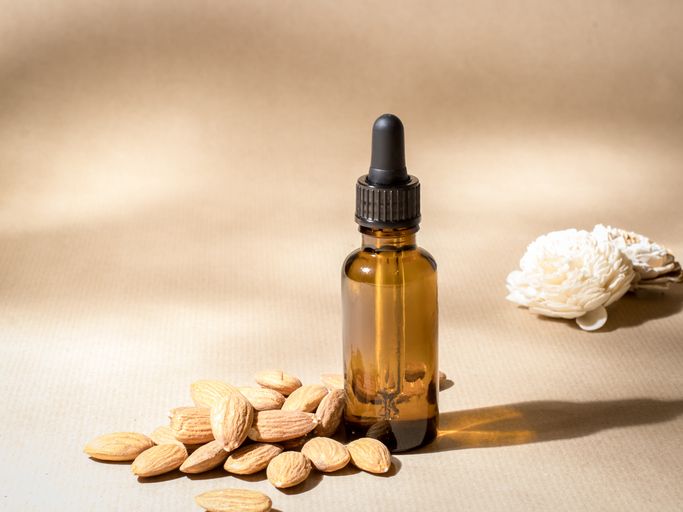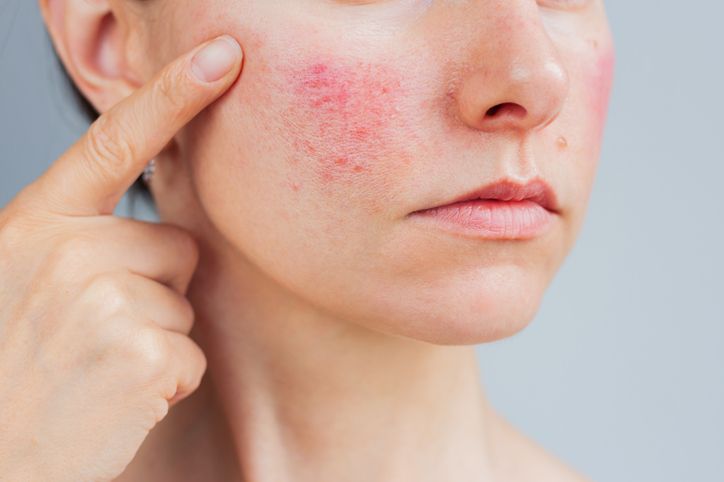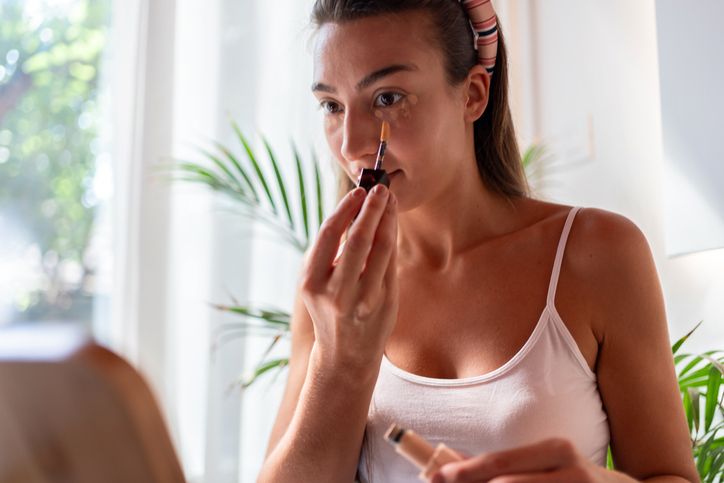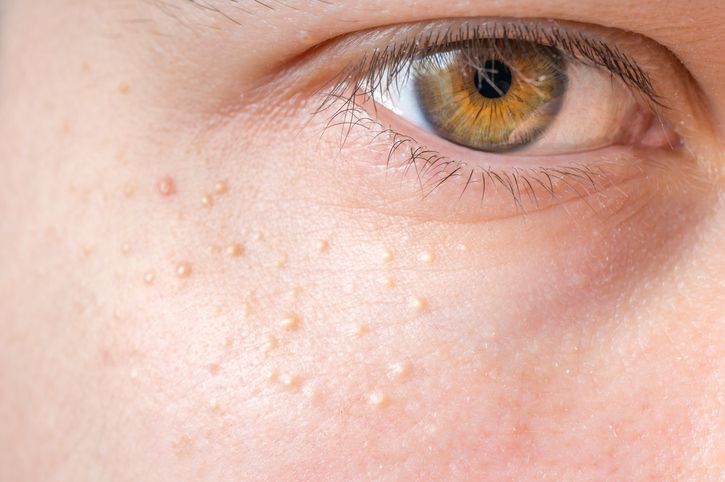- Home
- Trend
- Weight Loss Strategies
- Acne Tips
- Hair Health Information
- Blemish Removal Tips
- Acne Scar Removal Tips
- Muscle Building Techniques
- Intimate Care Tips
- Postpartum Intimate Care
- Eye Bags Wiki
- Tips for Face Slimming
- Secret of Permanent Hair Removal
- Breast Enlargement Tips
- Cure to Snoring
- Marionette Lines
- Skin-Tightening Secrets
Hong Kong’s hot and humid climate creates the perfect breeding ground for bacteria, making scalp folliculitis a common problem. But do you know why your scalp keeps breaking out? What are the symptoms and causes of scalp folliculitis? Let’s dive in and find out!
What is Scalp Folliculitis?
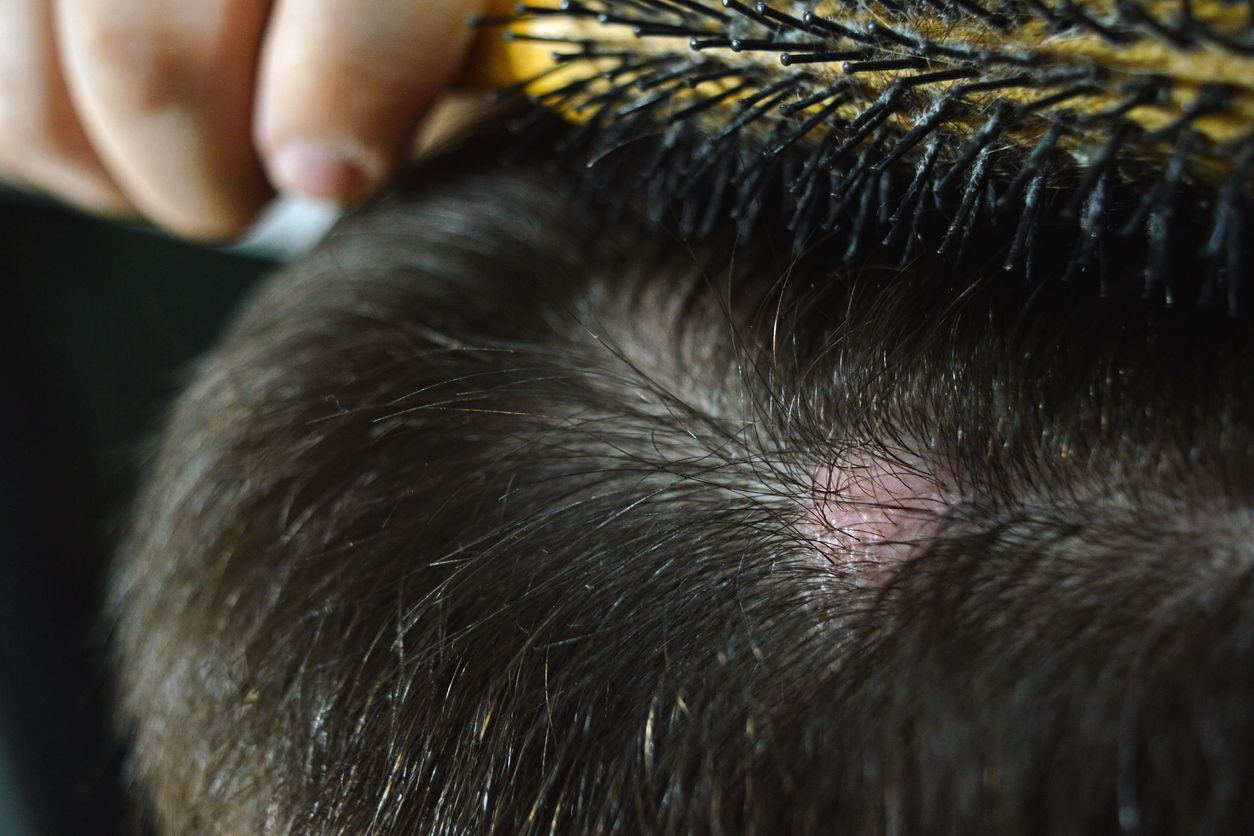
Your scalp is home to countless hair follicles—just like pores on the skin. These follicles are responsible for three main functions: growing hair, expelling sweat and sebum, and producing protective oil via the sebaceous glands. Under normal circumstances, your scalp naturally secretes oil to moisturize and protect itself. But if proper cleansing is neglected, excess oil, dead skin cells, and dust can clog the follicles. This creates an ideal environment for bacteria, triggering inflammation in the surrounding tissue.
Folliculitis is a skin condition where the tissue around the hair follicle becomes inflamed, forming red bumps, pustules, and sometimes cyst-like nodules with a hair growing out of the center. When the pustules burst, pus may ooze out before the area scabs over. Mild pain and itchiness are common, and although folliculitis can appear anywhere, it frequently affects the chest, back, and arms. When it occurs on the scalp, it’s called scalp folliculitis.
What Causes Scalp Folliculitis?
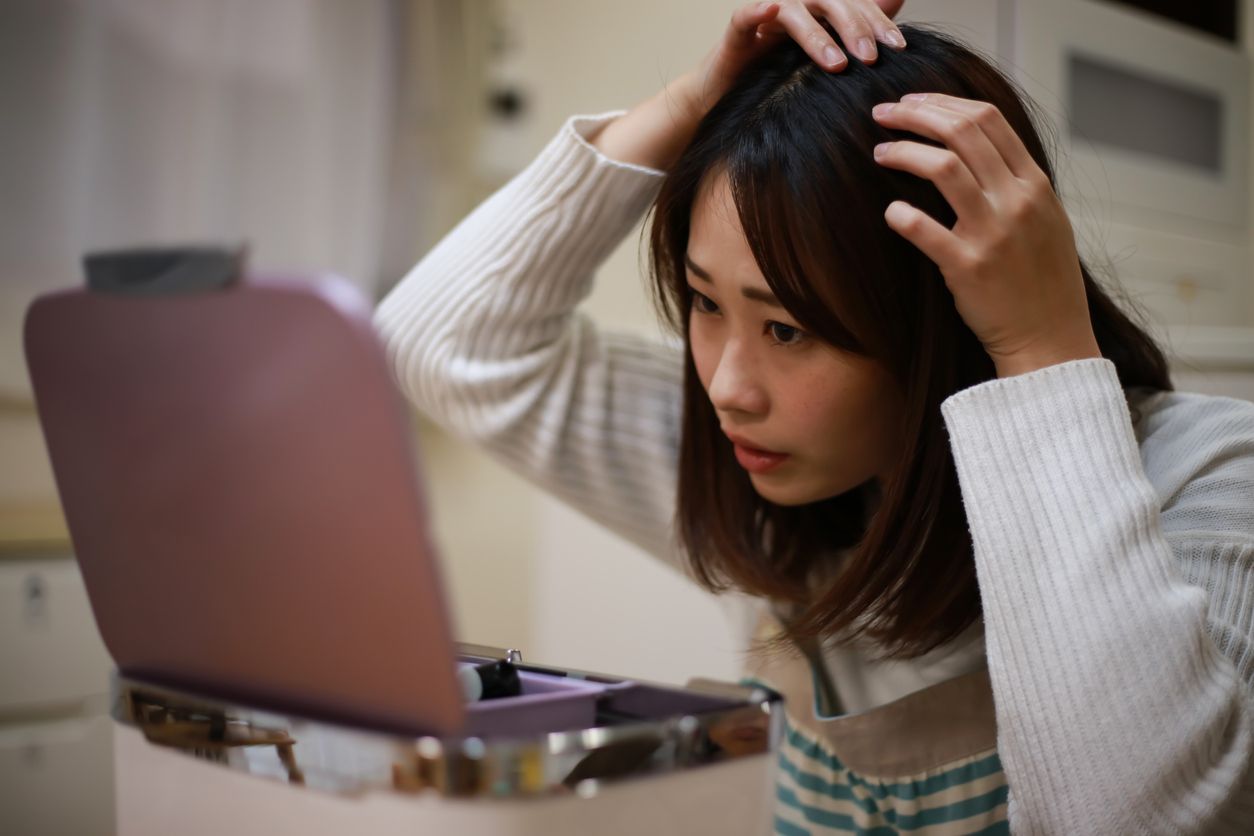
Scalp pimples may not be life-threatening, but if left untreated, they can damage the scalp and lead to hair loss. To effectively manage folliculitis, understanding the root causes is essential:
Cause 1: Excess Sebum Production
Hong Kong’s heat and humidity can trigger increased oil production on the skin and scalp. Women with naturally oily scalps are particularly vulnerable. If they skip a day of washing, their hair quickly feels greasy and may develop large, visible flakes. Compared to normal or dry scalps, oily scalps are much more prone to follicular infections.
Cause 2: Long-Term Antibiotic Use
Antibiotics are effective against infections, but prolonged use can wipe out beneficial bacteria, disrupting the skin’s microbiome. This imbalance lowers the scalp's defense against harmful microbes, making it more susceptible to bacterial or fungal invasion—especially when paired with poor scalp hygiene. Overuse of antibiotics is a common culprit in recurring folliculitis.
Cause 3: Weakened Immune System
People with chronic illnesses such as diabetes or HIV, or those taking immunosuppressive medication, are at greater risk of developing folliculitis due to their compromised immune response.
Cause 4: Poor Daily Habits
Shaving-related cuts, improper shampooing techniques, and using overly greasy styling products without thoroughly cleansing them out can all block pores and cause follicular inflammation. Other risky habits include staying up late, chronic stress, or not washing your hair after sweating—these all create a humid environment that clogs pores and invites infection.
免費體驗
F8 Hair Regrowth Treatment
1 Minute Self-Registration
Date should not be before minimal date
Is Scalp Folliculitis the Same as Acne?
Seeing red, inflamed bumps on your scalp might make you think it’s just acne, but the causes are different.
Folliculitis is an infection of the hair follicle caused by bacteria or fungi—commonly Staphylococcus aureus, Staphylococcus epidermidis, and E. coli-like bacteria. Acne, on the other hand, usually stems from clogged pores due to excess sebum or dirt. While some acne involves Cutibacterium acnes bacteria, most pimples aren’t caused by infections like folliculitis is.
Types of Folliculitis
Folliculitis can be categorized based on severity and cause. The three common types are:
Type 1: Bacterial Folliculitis
Often caused by Staphylococcus aureus or Pseudomonas aeruginosa, which enter the skin through small wounds. Public pools or hot springs can also trigger outbreaks. Symptoms include red, itchy circular rashes. If untreated, this type may escalate into more serious skin infections.
Type 2: Fungal Folliculitis
Triggered by Malassezia, a yeast normally found on human skin. When the immune system is weakened, this fungus multiplies, causing red, itchy rashes and sometimes pus-filled lesions.
Type 3: Pseudofolliculitis
Not caused by microbes, but by mechanical irritation—commonly from shaving or plucking, which damages follicles and causes inflammation without actual infection.
Who’s at High Risk of Developing Folliculitis?
While anyone can get folliculitis, the following groups are more vulnerable:
1. People with irregular sleep or daily routines
2. Those with seborrheic dermatitis
3. Women with naturally oily scalps
4. Fans of oily or spicy foods
5. Users of overly rich hair care products
6. People on long-term medication
免費體驗
F8 Hair Regrowth Treatment
1 Minute Self-Registration
Date should not be before minimal date
Can Scalp Folliculitis Lead to Hair Loss?
Don’t dismiss folliculitis as a minor issue—it can absolutely cause hair loss when it occurs on the scalp. Hair follicles are the roots that nourish your strands. If damaged or blocked, hair can’t grow properly.
Bacterial folliculitis usually causes only mild itching and rarely leads to hair loss. However, severe inflammation can be painful. Though it often clears up on its own, neglecting it may lead to cellulitis, a more serious skin infection.
Fungal folliculitis is more troublesome. Early signs like scalp acne and flaking are often ignored. If untreated, it can damage follicles and lead to permanent hair loss. Repeated inflammation may leave behind scars that destroy the follicle entirely—making the damage irreversible.
Common Mistakes When Treating Folliculitis
Misunderstanding scalp care can worsen folliculitis. Avoid these common errors:
Mistake 1: Overusing Anti-Dandruff or Antibacterial Shampoos
Many people assume their scalp is “dirty” and aggressively cleanse it with strong antibacterial shampoos. But the scalp has over 20 species of beneficial bacteria that help maintain immunity. Over-cleansing can kill these good microbes and weaken your scalp’s defenses.
Mistake 2: Excessive Oil Control
While oily buildup contributes to folliculitis, stripping the scalp of all its oil disrupts its balance. The scalp will overcompensate by producing even more oil, worsening the condition.
At-Home Treatment: 6 Simple Steps to a Healthier Scalp
Folliculitis may be stubborn, but not unbeatable. Try these six home-care steps at the first sign of inflammation:
1. Before washing, gently detangle hair with a brush and massage the scalp to boost circulation.
2. Wet your hair with warm water for about a minute to loosen dirt and sebum.
3. Lather shampoo in your hands before applying. Start at the sides of the head and gently massage upwards in circular motions for 3–5 cycles.
4. Rinse thoroughly with warm water—never leave shampoo residue behind.
5. Repeat the shampooing process once more for a deeper clean.
6. After washing, gently pat dry with a towel—never rub vigorously, as this can damage the hair cuticle.
免費體驗
F8 Hair Regrowth Treatment
1 Minute Self-Registration
Date should not be before minimal date
How to Prevent Scalp Folliculitis
Prevention is better than cure! Instead of stressing over treatments and hair loss, build healthy daily habits:
Prevention Tip 1: Eat a Balanced Diet
Greasy, high-fat foods can trigger excess oil and inflammation. Stick to a light, balanced diet to support scalp health and prevent flare-ups.
Prevention Tip 2: Maintain Scalp Hygiene
Cleanse your scalp regularly but avoid over-washing. Choose hair care products based on your scalp type. For oily scalps, focus on gentle but effective cleansing to prevent clogged pores.
Prevention Tip 3: Clean Hair Tools and Linens
Wash hair brushes, pillowcases, towels, and bed linens regularly—ideally once a week. This reduces bacterial buildup and lowers your risk of folliculitis.
Prevention Tip 4: Practice Good Hygiene
Avoid spas or hot springs with questionable hygiene. Always wash your hair after soaking to prevent bacterial growth and recurrence.
How Do Western Doctors Treat Folliculitis?
In most cases, folliculitis clears up on its own if your immune system is healthy. But if inflammation worsens or becomes painful, medical treatment is recommended. Doctors may prescribe:
1. Topical Medications
For mild cases, medicated creams applied directly to affected areas often help reduce inflammation and infection.
2. Antibacterial or Antifungal Shampoos
Unlike over-the-counter products, medicated shampoos are prescribed based on lab results or cultures to target specific bacteria or fungi.
3. Oral Antibiotics
In more severe cases, doctors may prescribe oral antibiotics or isotretinoin (oral AHA) for systemic infection control.
Rebuild a Healthy Scalp Ecosystem: Try Low-Level Laser Therapy
Severe folliculitis can cause irreversible hair loss, so don’t take it lightly. The key is restoring balance to your scalp’s microbiome.
Instead of guessing with random shampoos, trust the professionals. Perfect Medical’s F8 Hair Regrowth Treatment is a science-backed solution focused on “nourish, activate, and regrow.” First, it deeply purifies follicles, removing dead skin and product residue. Then, medical-grade laser therapy delivers potent hair nutrients to awaken dormant follicles. Finally, hair-growth serums stimulate stem cells, encouraging scalp and cell regeneration—building a resilient foundation for healthy hair.
Tried everything with no luck? Perfect Medical currently offers a free trial for their F8 hair regrowth treatment. Click the link below to register and experience a revitalized scalp!
Click to register: Perfect Medical F8 Hair Regrowth Treatment免費體驗
F8 Hair Regrowth Treatment
1 Minute Self-Registration
Date should not be before minimal date
FAQ

What causes folliculitis?
Women with oily scalps are particularly prone to folliculitis! Those with naturally oily scalps tend to have more active sebaceous glands, making their hair feel greasy after just one day without washing—and large, visible flakes often follow. Another common cause is long-term use of antibiotics. While antibiotics kill harmful bacteria, they can also wipe out beneficial bacteria and weaken the skin’s natural microbial defenses. This imbalance allows harmful bacteria and fungi to invade more easily, especially if paired with poor scalp hygiene. Other contributing factors include incorrect shampooing habits, using greasy hair products or styling gels without washing thoroughly, staying up late, chronic stress, and not washing your scalp after sweating. These all promote clogged pores and can trigger folliculitis outbreaks.
Can scalp folliculitis cause hair loss?
Yes—if folliculitis occurs on the scalp and becomes severe, it can definitely lead to hair loss. Bacterial folliculitis typically doesn’t cause shedding and is usually localized with only mild itching. However, if inflammation worsens, it may cause sharp pain. Though it often clears up on its own, ignoring it may result in cellulitis—a more serious skin infection. Fungal folliculitis is more troublesome. Many people mistake early symptoms—such as pimples and increased flaking—for minor scalp issues. Without proper treatment, it can damage hair follicles and lead to hair loss. If inflammation becomes chronic, scarring may occur, potentially killing the follicle and causing irreversible hair loss.
How long does it take for stress-related hair loss to appear?
Hair won’t usually fall out immediately when you’re under stress. Stress-related hair loss typically shows up about three months after prolonged physical or emotional pressure. Unlike sudden patchy hair loss (alopecia areata), stress-induced shedding is a gradual process. When stress reduces growth hormones and restricts blood flow to the scalp, growing hairs may weaken and shrink. These fragile strands enter the shedding phase early, leading to noticeable thinning. This “telogen phase” often lasts around 100 days.
Can daily use of anti-dandruff shampoos prevent folliculitis?
Not necessarily—and overuse can backfire. Many people use antibacterial or anti-dandruff shampoos hoping to eliminate bacteria and prevent folliculitis. But the scalp naturally hosts over 20 types of beneficial bacteria that work with your skin’s immune system to ward off harmful microbes. Excessive use of these shampoos can disrupt the scalp’s delicate microbiome, killing good bacteria and weakening its defense system. This can actually increase your chances of developing folliculitis. So antibacterial shampoos should only be used when truly necessary and not on a daily basis.
Are there treatments that can improve scalp health?
Yes—Perfect Medical’s F8 Hair Regrowth Treatment is designed to restore a healthy scalp environment and prevent folliculitis. The F8 program follows a three-step concept: nourish, activate, regrow. First, it deep-cleans the scalp and unclogs pores, removing buildup and chemical residue. Next, it uses medical-grade laser therapy to infuse powerful nutrients and speed up cell renewal. Finally, it applies intensive serums to stimulate stem cells deep within the scalp, triggering regeneration of skin and blood vessels. This helps reduce oiliness and bacterial growth, creating a healthy environment where folliculitis can’t thrive—and hair can grow stronger and thicker.






